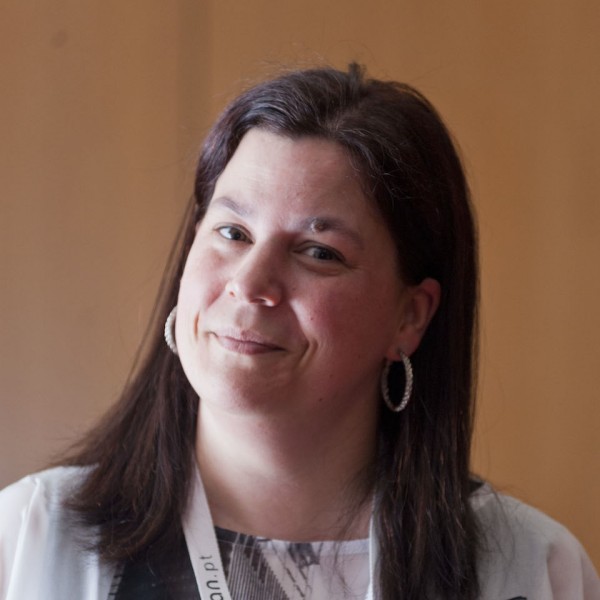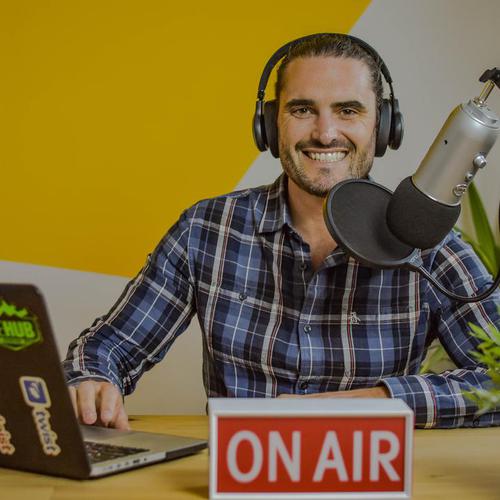Enterprises always seem to be leaders and laggards at the same time.
When it comes to remote work, enterprises were forced to experiment with options a decade or more before others due to time zones and distributed offices.
However, they don’t always get everything right.
Dragana Beara is the Global Messaging Director of Emerging Technologies at Dell and has spent a lot of time learning from customers about the role of technology in workforce transformation.
What is a digital workplace?
Dragana says that the digital workplace is a fluid concept that every company has to define for itself.
As technology becomes a prominent part of our lives and work, building a digital workplace is about creating a blend of human and digital. And this extends beyond technology—it’s about nurturing a culture that leverages technology to solve problems, collaborate better, and creates better user experiences.
Dell’s lockdown philosophy
Quoting Michael Dell, Dragana says, “work is not a place or a time but an outcome of our activity.”
Employees have the opportunity to choose how and when they’re being productive. And technology is no longer an obstacle. Dragana says, achieving a shift in mindset to embrace remote work is a bigger challenge, especially in Asian cultures that prefer face-to-face relationships.
The key to getting the benefits of remote work lies in trust. Dragana says that organizations should only hire people they can trust. Leaders shouldn’t have to constantly monitor their employees. While remote, leaders need to define guidelines and structure processes to help employees understand their role, build trust with their managers, and remain connected.
Earlier last year, Dell launched its Connected Workplace Program 2.0, a worldwide initiative aimed at building ergonomic workstations for employees working from home. And in regions where COVID has been contained, Dell has started reintroducing the workforce to the office culture by rostering them on a rotational basis.
Where SMEs have it better
Dragana says building a digital workplace is a company-wide initiative. While these programs are spearheaded by top management, everybody needs to have a say in what works for them—and this is easier in smaller teams.
Today, there solutions specifically designed for companies that don’t have large IT infrastructure. Smaller organizations can choose from an array of plug and play tools that immediately serve their needs.
Larger companies, Dragana says, wrestle with demand. They may have access to more tech but different environments need different solutions. And so, decentralized organizations often struggle with implementing technologies and policies across multiple locations and business units.
What leaders need to spend time solving
Dragana says organizations constantly worry about future-proofing. To be successful, leaders will need to gain a better understanding of their implicit biases and learn to let go of ideas that hinder productivity and work relationships.
The talent pool, particularly in STEM fields, makes for great study—future graduates can only fulfill about 45% of job opportunities in the US. So organizations will need to broaden their search for talent and look to the global market to make up the difference. And as the workforce grows and diversifies, Dragana says, leaders will need to spend time crafting policies that are welcoming of their employee’s views, cultures, and backgrounds.
Links
Dell’s partnership with VMware
Quotes
4:42 – “Work is not a place or a time. It’s really just an outcome of our activity.”
6:29 – “You should not be hiring people that you can’t trust, without looking over their shoulder because people can be in your office all day long, all the time but nobody has the bandwidth or capacity to watch over everyone’s shoulder and make sure that they’re constantly on task. We’re humans and people sometimes need to step away.”
2:09 – “We’re moving further along that spectrum that’s bridging reality into digital and starting to see more of the digital elements permeate into our lives and work. We have to find ways to really blend them more naturally. And that extends beyond just IT, it extends into culture and it’s all about people. It’s all about user experience. It’s about making that work flow more natural, more easy, more efficient, and more satisfying.”
Welcome back to The Digital Workplace podcast. I’m very excited about our guest today, she is Dragana Beara, she is the global messaging director of emerging technologies at Dell. Hi, Dragana, how are you?
Hi, Neil, I’m great. How are you?
I’m excited. I’m excited because you have a lot of good perspective to share with the people that listen in to the show. So give us an overview of your role, your experience, how you got to be where you are now.
It was a long journey, and not very contrived. Actually, I would have to say it was a number of circumstances, it led from one thing to another and here I am in Singapore right now, working on immersive technologies, messaging for Dell. In the last two and a half years, actually three and a half years, I also spent a lot of time with our customers in Asia Pacific Japan region, talking about workforce transformation, which was one of the pillars of Dell Technologies go-to market strategy to really bring the full breadth of our technology portfolio for various customers, regardless of their size, with a compelling story on what they can do with it to take their workplace to the next level into the digital workplace.
Great. Well, let’s start with an easy question, right. What is a digital workplace? In your definition. If a company says or a CEO says I need to build a digital workplace, from your vast experience and interaction with lots of different people, how do you define that?
So a digital workplace is different for different people, different organizations. It doesn’t come close, it has some things that are in common and it’s not just the realm of digital, it’s really trying. And that’s one thing that I think also with immersive technologies that we’re seeing is that as we’re moving further along that spectrum that’s bridging reality into digital and starting to see more of the digital elements permeate into our lives and work, we have to find ways to really blend them more naturally. And that extends beyond just IT, it extends into culture especially in the workplace, because in the workplace are people. So it’s all really about people. It’s all about user experience. It’s about making that work flow more natural, more easy, more efficient, and more satisfying. Actually, most of all, for all involved, all the way from the employee to the customer. So it is a pretty broad and wide ecosystem of players that come together. And more so these days than before, we can have different groups of people interacting with solving a specific problem in a particular point in time and they may never ever ever come together in that same formation again, so you need to build something that can meet the demands of something like that. And I know I’ve given a pretty esoteric definition, but it is something that every company will have to define for themselves and will have to keep redefining it as they move along that digital adoption spectrum.
Yeah, absolutely. I love what you’ve been saying. I like thinking about it as a blend of technology, but also of people, of culture, of how we’re going to use that. And really, you’re so correct in saying that not only has technology changed and how we work, but the way we work has changed. And the idea of having teams that come together for a project and then disbanding and doing other things and working with people around the world. It really is time to kind of reset all our work and now we have all these digital tools in front of us then we say okay, what’s possible, what’s good instead of just throwing a lot of technology at people, really thinking through that. So you’ve been sitting in this role of thinking about strategy, thinking about how to actually make something good happen come out of that. So share some of the wins and some of the successes you’ve seen at Dell, in terms of making this reality.
So Dell is its own biggest success story, funny enough and one of the things that really comes to mind is one of the communications that Michael Dell sent out to the workforce during the peak of COVID lockdowns around the world and I think this is one of the ultimate truths right now. He said, You know, this pandemic has proven that work is not a place or a time. It’s really just an outcome of our activity and so we need to start considering how we engage in the activity or work in that context. So People should have an opportunity to choose how and where they’re productive and at what time and given the tools that exist today, given the technology that exists today, technology is not an obstacle. A bigger obstacle is actually the mindset, especially one of the things that I’ve seen here in Asia pre-pandemic, it’s not necessarily something, you know, Asian cultures are very much used to face to face interaction. And who’s to say that, you know, video face to face is not good enough. Right now you and I are face to face. And that definitely helps. Of course, we don’t have that three dimensional energetic exchange here. But the key point is that there has to be also a level of trust. And a lot of cultural misconceptions did exist and one of our partners, actually who was very keen to adopt a digital workplace and even become our partner who drives digital workplace initiatives, was speaking with me one day and said, “You know, I know I want to do all this, I know it’s good. But deep down in my heart, I always wonder, like, how do I know that they’re really working.” And that’s when we had a big conversation about trust and the fact that, you know, you should not be hiring people that you can’t trust, without looking over their shoulder because fundamentally speaking, people can be in your office all day long, all the time but nobody has the bandwidth or capacity to watch over everyone’s shoulder and make sure that they’re constantly on task, because also, we’re humans, and people sometimes need to step away.
And that non-productive time actually contributes to greater productivity down the road. So it’s really a thing that Dell has really managed to take to the new level. We started with our connected workplace program back in 2009, which was very informal, at the discretion of the manager and the employee, they would have an agreement on how many days or whether permanently that employee was going to be remote and what the KPIs would be and then over time, that evolved into a more structured program. In 2012, we had actually put together a connected workplace program from the HR standpoint, there were some guidelines put in place based on some matrices that were created by HR to assess first of all which job categories are more likely to be remote work friendly because if you’re a security guard have to be on prem, if you’re a receptionist typically you should be on prem. But there are many, many jobs in that gray area that to different extents, could give you more flexibility to not be present in the office if that’s not required. So helping managers figure out which jobs are the ones that are more likely to be flexible, what type of personality, and an employee is more likely to be successful in that kind of setting because if you look at new hires, especially new grad new hires, for young, who really want to learn, want to meet new people. Even their personal preference, I mean, of course, personal preference should also be considered, is most of those people want to be in the office, they actually don’t want to be at home, while maybe a more seasoned new hire who has complex family life and things that they need to deal with. They want more flexibility, and perhaps they don’t want to be in the office as much as a new grad new hire.
So all that has to be considered and we have put some guidelines in place to help management out because as much as we need to give people technology, we need to give them structure on processes, we need to also give them enablement. Enablement is really key, not just from the technology standpoint of like this is how you use these specific tools, but also around how you think about your role. How do you think about your role in a context of a greater organization and your relationship with your manager and vice versa. How do managers transition from being in person managers to being this remote around the sun workforce manager that you can’t look over their shoulder. So giving people those kind of tools and providing the support becomes really key. And so we created an employee resource group called Connexus, which is really focused on remote workers where in some parts of the world where there are vast distances and good infrastructure, some people had an opportunity to really move away into their cabin and be remote permanently. And some people like it, other people may not like that as much. But fundamentally speaking, despite the old notion of people working from home having the luxury of you know, sitting on a couch eating bonbons watching Oprah all day long, it’s certainly not the case.
I think people have found that when you work from home, you actually don’t take some of these breaks of, you know, getting ready for work, and commuting and doing those things are actually non-work related that allow you sometimes to unwind and really refocus. Instead, people who work from home they get up, they sometimes stay in their pajamas all day in front of the screen working non stop not taking any breaks and that can really wear a person down. And I think a lot of people in this pandemic can become a lot more aware of that, as well as not being around your colleagues and your boss can also lead to a feeling of disconnection, and also a feeling of being invisible. So how do you as a remote worker grow your visibility? How do you remain connected? How do you create these peer networks that you can lean on and remain from your own personal satisfaction perspective, as connected? So that’s what our Connexus ERG team contributed to some kind of best practices around how do you work remotely in the best possible way. So when the pandemic strike, and we had 65% of our workforce eligible to be part of the connected workplace program, we rapidly had to shift the remaining 25% to get 90% of the people working from home not that everybody had conditions to work from home, right.
So how do we provide people support, I mean, the fact that we’ve been on this journey for as long made it so much easier for us, we very rapidly shared some of these best practices around the world, we still have 10% of the workforce that had to go into the facilities just because we operate a lot of data centers, we operate a lot of manufacturing facilities, and so some people still had to go in so we had to also put in place some special safety measures so that whoever had to go in had safe distancing, had disinfectant lotion around them, had safe ways of transportation to work and back and all of that that we just needed to make sure that the operation continues, that we meet the markets needs. There was a big rush for the personal computers and devices so we also met that global demand while our supply chain was getting hit from various global lockdowns and we became quite resourceful, we then could not give our new hires. We were onboarding 16 new hires a week that would join the company during lockdowns and we had no laptops to give them so we actually turned to VDI technology, which is something that we also offer together with VMware and we were quite successful at giving people a way to become productive immediately, without necessarily giving them a laptop, they could use their own device. And in a secure way, our contractors could also continue to work remotely without accessing certain information that was not, or they could access it safely, they couldn’t have it on their devices and we also managed to actually convert several 1000 employees in China also to VDI, so everyone actually had a great experience and they are continuing to use that technology in addition to getting new laptops.
Yeah. I think that the theme and the people we’ve talked to is that the actual transition to this style of work wasn’t as horrible as people thought it was going to be, it actually worked out pretty well, just to show that it was possible. Now we’re in this age where we’re trying to figure out, okay, we did it, but how it’s not perfect, we still got a lot to work on. And Dell is a great example of a company that had been thinking about this for a long time and still there’s challenges and still there’s things to get over and to try to figure out.
And we’re still on a journey. I mean, actually post-pandemic, one thing we realized we said okay, so you know what, let’s do away with those job matrices, what jobs are conducive, which ones are not. Obviously it became very clear that 90% of the jobs could be done or more, you know, like 90% of the workforce can be remote. So we became connected workplace program 2.0 that we launched this fall and it’s going global to every country in the world where we operate every employee is going to get a certain amount of dollars, US dollars. It’s going to be consistent around the world and I can’t remember the exact amounts, I can’t tell you to set up their home office. We’ve also given people who were regular in the office an opportunity to take their chair from the office home. So they can have their home office setup, we have given people an opportunity to bring their monitors or whatever else they had on their desk that was making them productive if they opted for connected workplace 2.0, but that doesn’t mean that they’re now forced to always be at home, because we’re going to have mobile workstations that people can reserve and book ahead of time, if they want to come to the office and spend time in the office with their colleagues as well once back on site gets implemented in different countries, for example, here in Singapore, because infection has been contained, we have rotational onsite opportunities for people who prefer to be there because again, as I mentioned, some people just don’t have good conditions to work from home, because maybe they have a large family. Maybe there is just other reasons why they prefer to be in the office and so we do try to accommodate people’s preferences, again, always in compliance with the government regulations and safety standards. And so our facilities are very, very actively monitoring the situation around the world and adjusting all the planning and all the processes according to whatever is happening in a specific place. So for example, what’s happening in Singapore will not be happening in the US right now. And, you know, something else may be happening in Malaysia and so on.
I love that you’ve brought up the idea of agency a lot, you know, letting people have the option to choose things, having options available, and then letting people pick what works best for them, I think is a great theme that we again, we hear that a lot, because it just, we’re gonna have to have different solutions, we can’t just have a one size fits all thing that everyone can adapt. Dragana, let’s spend the rest of our time talking about, Dell is obviously a huge influence and a huge company around the world and we’re talking to CEOs of smaller companies or C suite leaders, and they’re thinking about what can they learn from your example about when it comes to actually thinking about the strategy behind how they set up this digital workplace? What are some of the things that you’ve learned and you’ve seen other companies apply, that the leaders of smaller organizations can take away?
Yeah, that’s a fair question and frankly, I think actually, smaller organizations have some advantages to large ones, because this is something that has to be driven from the C suite and it has to be something that is done cross functionally, it has to be something that is a company wide initiative, it’s not one organization, HR or IT that’s leading it, everybody has to collaborate together to decide what is the best strategy for them in the near term, midterm and long term and constantly reevaluate that because we do that as well. For a small company, the C suite is probably quite aware of what they’re trying to do in the market. And, you know, what are they taking to market how they’re taking to market, who’s their audience, Are they doing it through a partner network? Does that Partner Network need to be considered as part of their digital workplace strategy, because that would make things easier for their employees. And when it comes to technology, actually, these days, it’s very easy to buy technology through various cloud offerings and midsize business offerings, even we have a lot of stuff that’s designed for people who don’t have large IT organizations. So when it comes to technology, procurement, and that is probably the easy thing.
Let me ask you, do you feel like at Dell you have access to technology that somebody at a company of 100 employees does not. Do you feel like, is there any gap between those?
We probably do and frankly, just because we’re so big, we probably have even more than we need. And so with a small company, you do have an opportunity to really get exactly what you need, versus trying to meet demand because again, we operate in more than 100 countries around the world. And so different environments need some different, both technology and policies and everything so it’s just much more complex at Dell, while a smaller company would have an opportunity to probably be more centralized in one place and be able to yes, maybe they won’t have every Bell and whistle that we have, but they will probably be in a position to get exactly what they need and have so much redundancy for various scenarios around the world. And so from that standpoint, if a head of HR and a head of technology and a head of- depending on again, what your business is, facilities that you’d have, offices, or maybe if you’re a very large Field Services kind of organization, you have a lot of people who are not in the office who are actually out maintaining various infrastructures, or maybe offering services to other customers are actually truly not anywhere centralized, then you can have a completely unique digital workplace model, maybe you don’t even need a large office, maybe you need a very, very small space, that would be a place where everybody’s going to gather to, you know, collaborate, on the days when they need to have meetings, where you’re going to host your customers, while everybody else works from home. If you’re in a country and a place that has that kind of setup. If you’re not, maybe you want to lease some of those reworked style places that are near your employees homes, for those who cannot work from home and give them a chance to go somewhere where they can be quite productive in a quiet environment, while again, giving them that small, one centralized environment for collaboration and that’s something that we are seeing actually is a phenomenon around here in Southeast Asia where a lot of people still prefer to go to a more official working station place while not wanting to commute too far. Because if you look at Manila, or if you look at Kuala Lumpur, commute times there are quite mind boggling and people do waste a lot of time in traffic. So why put them through something like that when you can offer them flexibility, with location beyond just technology.
Well, if technology is not a limiting factor, you have all these new opportunities now location’s not really a limiting factor. Let’s just leave our audience with one question you think the C suite leaders should be wrestling with when it comes to their individualized digital workplace strategy? Like what’s one difficult question they need to spend time wrestling and deciding?
I think one of the key things for everybody is to really decide, do I really, from the bottom of my heart buy in on this, am I going to judge people if they’re not in this office space that I provide them? Is them not being around going to backfire on them in some way? Everybody has to be really, really honest with themselves, they need to understand their own personal biases and if those biases are getting in the way of their productivity, I’m getting, you know, future ready, because in the future, it’s not just a technology, but actually because of technology, the marketplace, especially for the STEM subjects, so Science, Technology, resources are going to become scarce. Because if you, well we actually do a lot of research at Dell about the STEM in-market and we’re monitoring the graduation rates and the new class entrance into these various technology programs. And we found that actually, if you look at people that have entered schools last year, and this year, and their graduation in four years, they’re only going to be able to fulfill 45% of the jobs that are going to be open in the US. So where are the other 55% going to come from? Well, these companies are not going to just give up on looking for people not when they tried to import them all into the US. They’re going to come after the global market. And they’re going to come with technology, they’re going to come with these policies, they’re going to come with the culture that will be welcoming to a diverse and remote and flexible workforce. So people who don’t realize that this is as close now even and definitely four years from now, will really need to start rethinking their strategy, because they are going to lose good talent to the remote employers, which will become more of a phenomenon as we move forward with this kind of digital workplace.
Yeah, absolutely. I love your point about just having that self awareness to figure out what kind of company do you want to be? What are you going to be comfortable with? What are the biases of your whole team and like the example you gave earlier of the guy who said, you know, in my heart of hearts, I’m always gonna be a little skeptical if people are working, like if that’s where you are, then..
He’s gotten over it. I have to say, actually what’s interesting about that specific company, they’re a partner of ours in the Philippines who spent the year before COVID, and not obviously nobody knew that this was going to happen. But they they were quite excited and interested in delivering digital workplace to Philippine customers, and have worked on themselves because one of the suggestions we made, we said, look, if you want to take this to your customers, you have to do it yourself, you have to have that understanding what people are going through before you can offer services to do this for them. So they did. And we’ve helped them along that way and they’ve had their stumbling blocks, and most incredibly, is that the Philippines had a very strict lockdown in the springtime. This was the only company in IT business that was open during that lockdown, because they were set up to work that way, they posted the highest earning quarter in the history of their company, for that period during the lockdown. So it’s a great success story and they’re huge champions of this. And it’s just like, it was one of those, like you say things that they looked internally to look at their demons, you know, decided that it wasn’t worth it, holding on to some of that stuff and really kind of casting aside some of the biases and really moving bravely forward and it paid off for them.
Yeah, and understanding where those demons come from, I think is important, understanding the context of work, looking at the history where we’ve come from, the Industrial Revolution, and the things that were good about that, the things that were bad about that that we’re still holding on to. That’s great. I love that. Dragana, this has been an awesome conversation. I loved getting to hear your perspective from someone who’s seen the effects on 1000s and 1000s of people as it comes through. But yeah, it’s been great to speak with you. We’re looking forward to chatting with you again soon in the future. Continue these conversations, anything else you want to leave with our audience.
I think I just want to quote Michael Dell. Again, I think that one thing that we all need to realize is that work is not a time and a place. It’s just an outcome. So we need to decide how we want to get there and be brave and bold and fearless. That’s really it.
Awesome. Well, thanks so much for being on the show.
Thank you, Neil. My pleasure.
At the time of the interview, Dragana Beara was the Global Messaging Director of Emerging Technologies at Dell. She is currently the APAC Head of Google Workspace Customer Engineering at Google.












